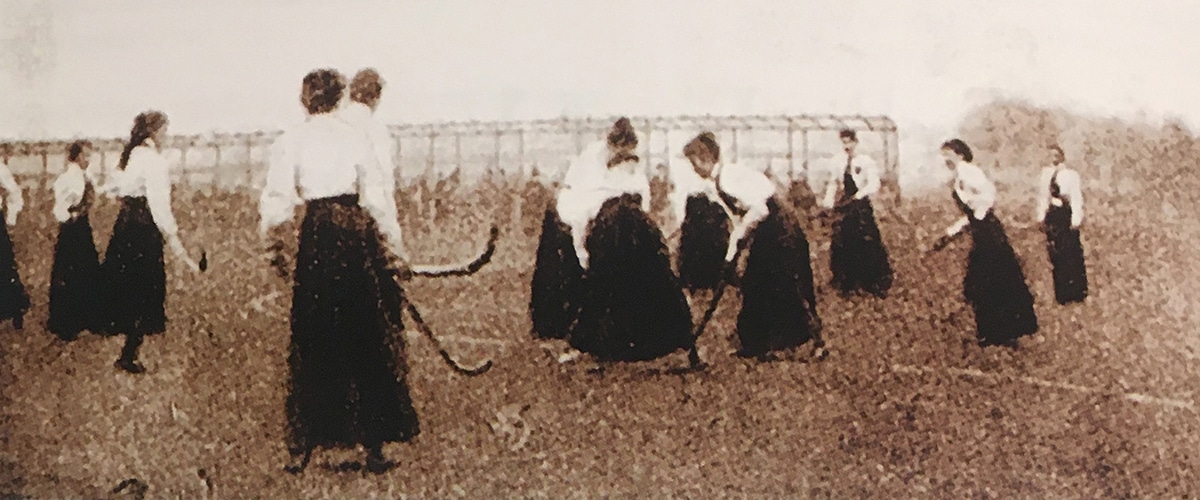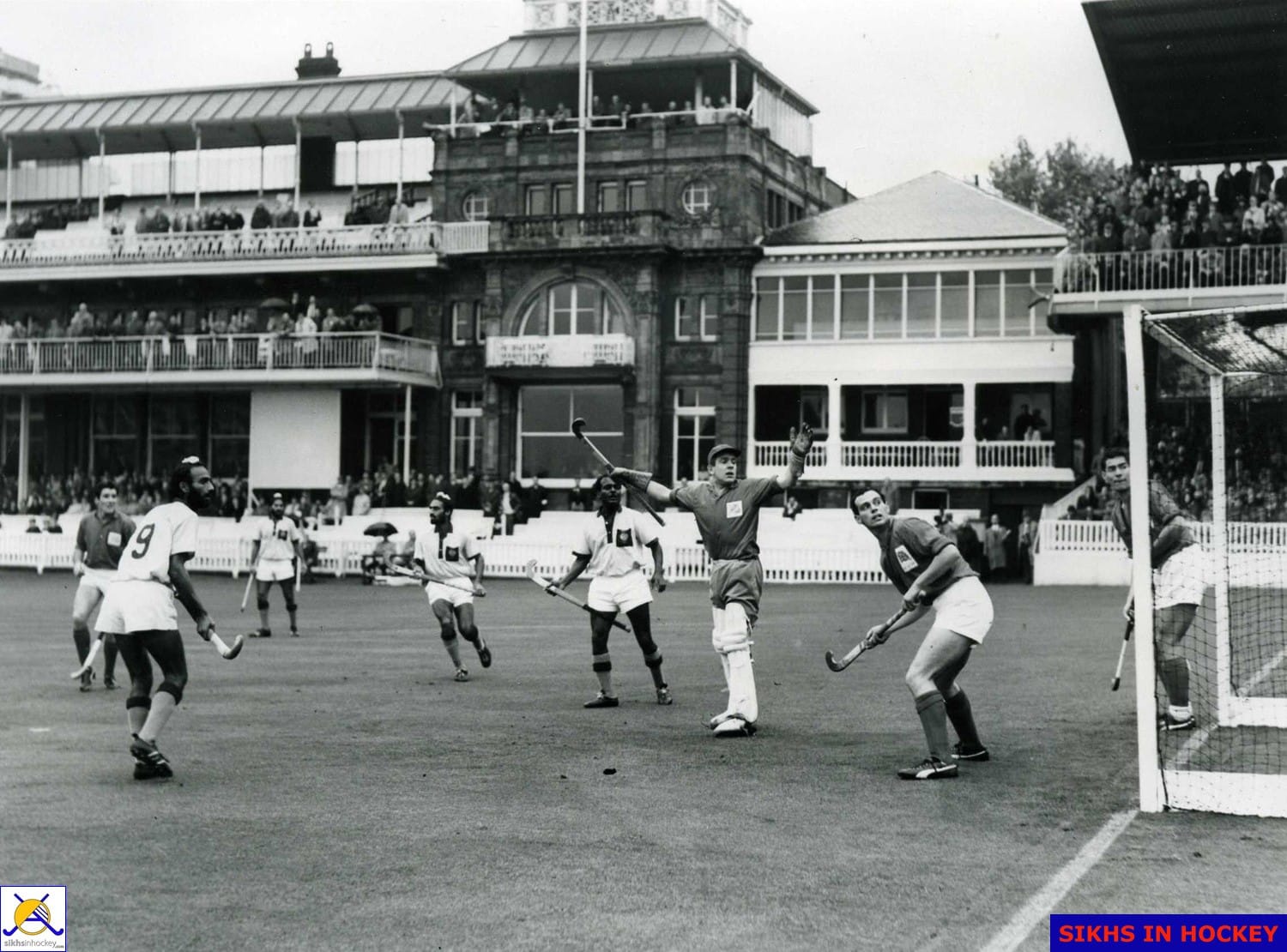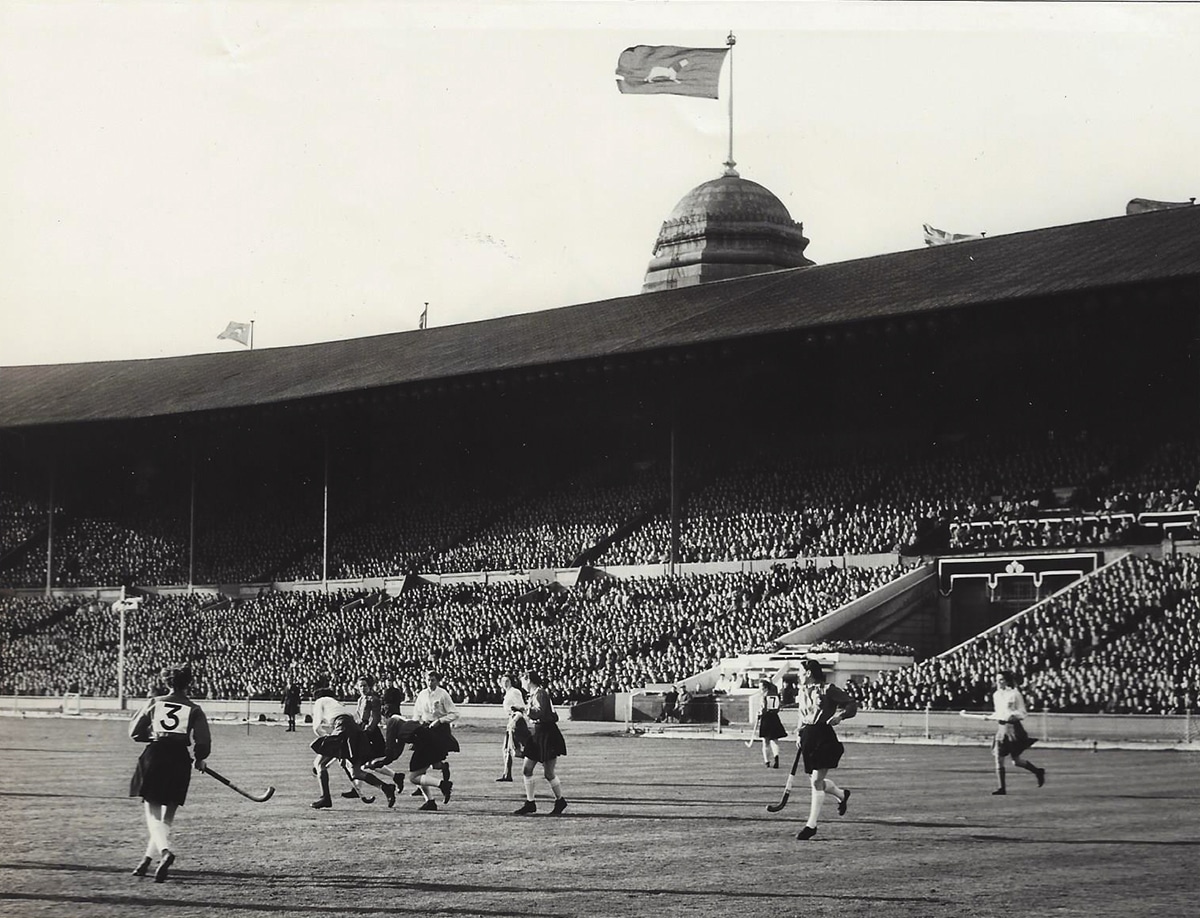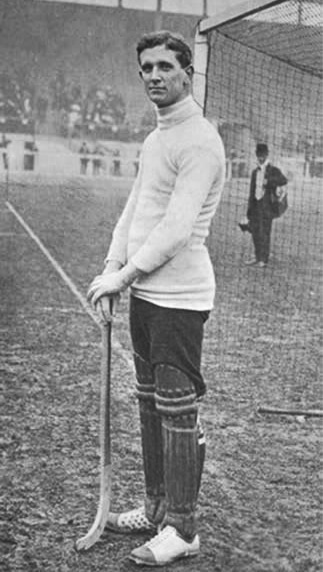An archival document recording an All England Women’s Hockey Association (AEWHA) tour to Australia and New Zealand in 1914, leads The Hockey Museum (THM) Archivist on a journey of discovery to trace a very special match ball with an intriguing social history.
 |
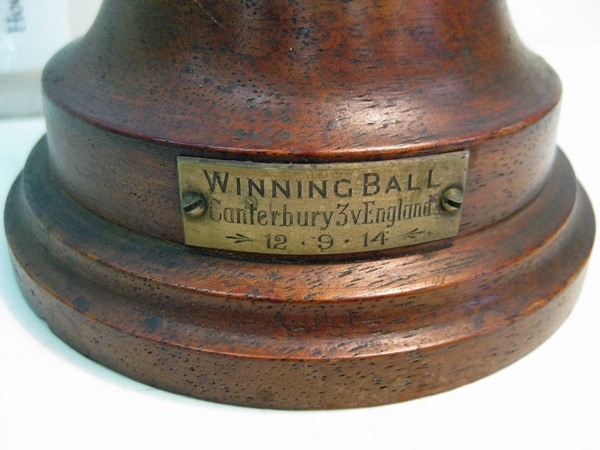 |
|
The match ball from Canterbury vs England, 12 September 1914. |
As an archaeologist sifts through layers of dirt to find the treasures of history, so does the archivist. As THM’s Archivist, I (Marcus Wardle) sift through papers to unearth the hidden gems of stories and nuggets of hockey history.
Some weeks ago, I was working my way through a series of archival papers when one surfaced that immediately caught my eye: a paper on the England women’s tour of Australia and New Zealand in 1914 entitled, “See These Brilliant Exponents of the game” The England Women’s Hockey Team Tour of Australia and New Zealand in 1914.
This English tour has long been of interest because it began international hockey for Australia and New Zealand.
At this time the English side did not necessary comprise the nation’s best players, rather, it consisted of those women who could afford to travel half-way around the world and had the leisure time to do so. This tour also took place right at the beginning of the First World War.
It is an interesting tour for its social aspect. Whilst English hockey has always been a reasonably gender-neutral sport, with the men’s and women’s associations founded within a few years of each other, this is an England women’s tour setting out ahead of their male counterparts. In 1913, the Hockey Association of England (HA – men) had declined an invitation to send a touring team because they were worried that the guarantee of expenses for the tour would offend the sensibilities of the amateur players. Another perspective could be that the HA did not want to encourage the idea of professionalisation. Hockey was, and was intended to remain, an amateur game. The AEWHA however – who would have shared the same concerns around ‘amateurism’ – accepted and became the first women to tour internationally.
There is a strong social, gender equality element to this tour. As documented in the archival paper I came across, in 1914 the members of the Australian and New Zealand Ladies’ Hockey Associations were “educated and economically independent, able to participate in political life”. In New Zealand, women had been granted the vote in 1893 with Australia following suit in 1902. By comparison, similar laws in the UK were not passed until 1918, four years after this tour. As the English women’s hockey team toured a society more progressive than their own, this would have had an impact. Arguably, sport gave women a platform to experience and push the progressive initiatives of the day.
However, as progressive as they may have been in Australasia, this did not extend to the wearing of more suitable playing gear. Long skirts and long-sleeved shirts were still the chosen playing kit for women during this period.
The Hockey Museum holds a skirt from one of the England players from this 1914 tour.
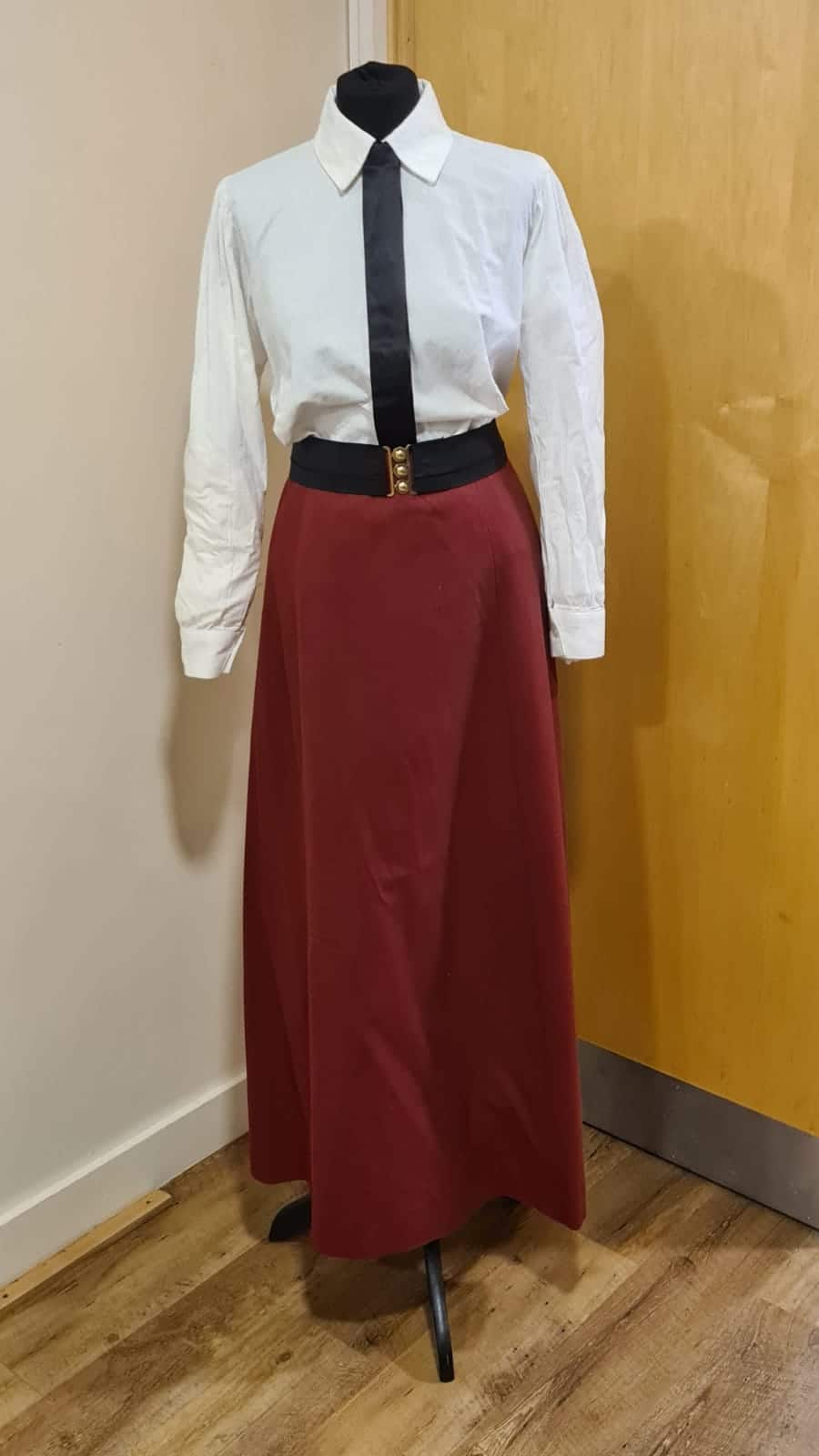 |
| An original ankle-length skirt from England’s 1914 tour to Australia and New Zealand. The blouse and tie are replicas. |
During the tour, several of the hockey matches were played after rugby fixtures, which equated the prestige of the games with men’s sports. The reporting of the matches followed in a manner that was on a par with male sports reporting. In some cases, the matches were almost recorded blow-by-blow with a separate column for analysis of the match. Such was the reporting of the matches and the fervour that surrounded the national team in New Zealand that matches were reported as the English Women’s Hockey Team versus the All Blacks. The New Zealand rugby team had earned the moniker ‘The All Blacks’ and association of hockey with that name implied a certain pride and status.
Due to the young age of the New Zealand Ladies’ Hockey Association (founded in 1908), any win against the longer-established AEWHA (founded in 1895) was momentous. On 12 September 1914, Canterbury defeated England 3-2. Contemporary reports detail how two players were carried from the pitch to the pavilion on the backs of the crowd. Amongst this melee, the ball was rescued and presented to the Kaiapoi District Historical Museum where it still resides today.
The paper about this tour is significant because it has allowed us to trace a special and unique sporting heritage object.
While the match ball itself is a minor footnote in the history of sport in New Zealand and of women’s international hockey, that it was kept and is displayed to chronicle a match where a New Zealand team defeated an English team – the strongest hockey nation of the time – is a significant statement of national sporting pride. It is this object’s relationship to the social history from its period that is most compelling. It is a trans-continental story of sporting gender equality. A story that reveals significant levels of public interest in sport in a socially progressive New Zealand, and which implies a level of prestige for women’s hockey that could have developed further to rival men’s sport.
Regrettably, the progress promised by this tour was immediately disrupted by the outbreak of the First World War.
Marcus Wardle
29.07.2021

